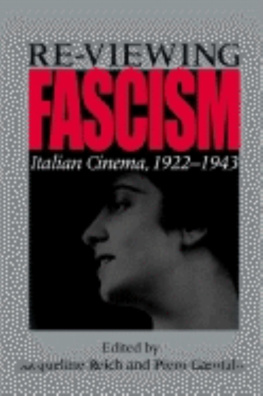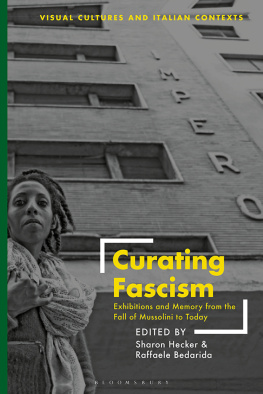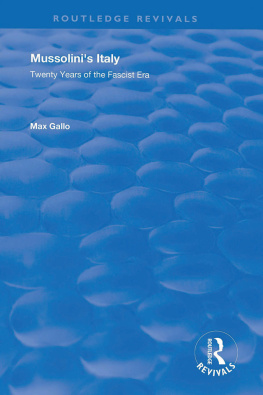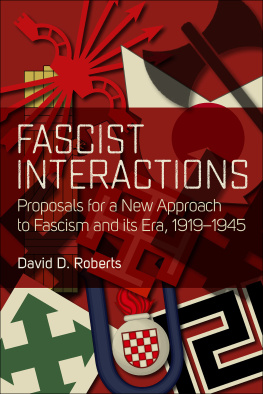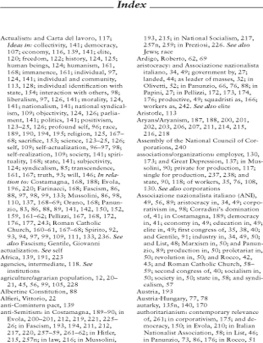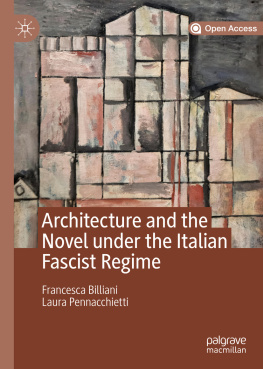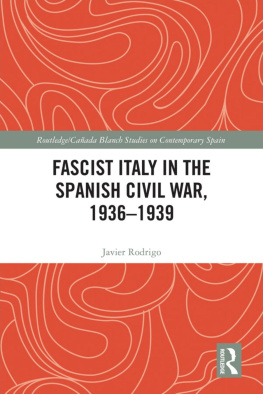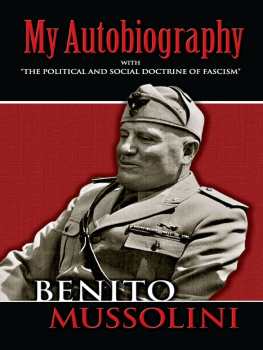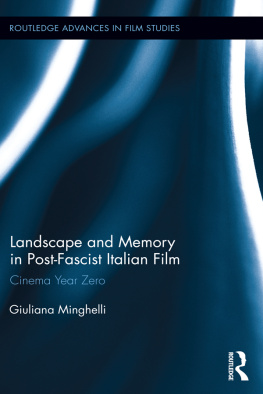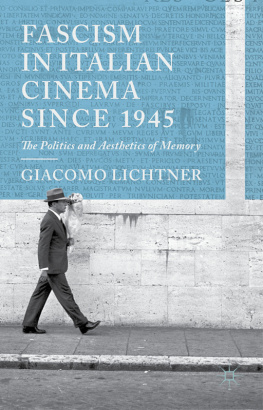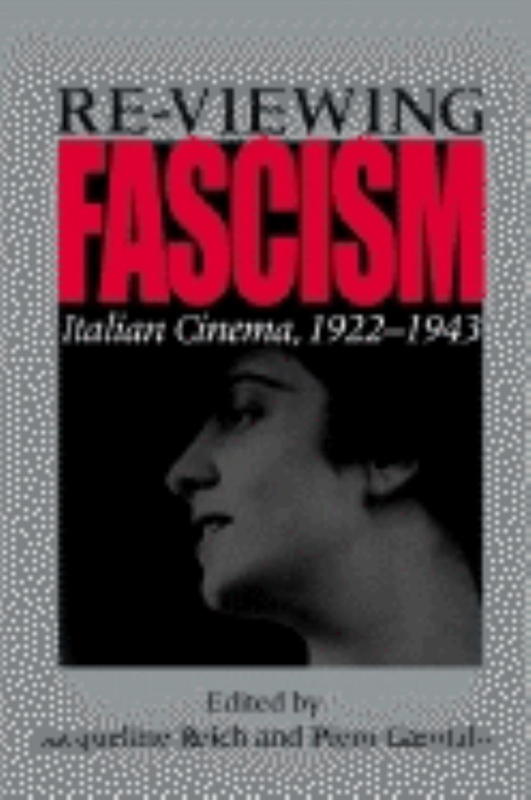Re-viewing
Fascism
Re-viewing
Fascism
Italian Cinema, 19221943
Edited by Jacqueline Reich
and Piero Garofalo
INDIANA UNIVERSITY PRESS
Bloomington & Indianapolis
This book is a publication of
Indiana University Press
601 North Morton Street
Bloomington, Indiana 47404-3797 USA
http://iupress.indiana.edu
Telephone orders 800-842-6796
Fax orders 812-855-7931
Orders by email iuporder@indiana.edu
2002 by Indiana University Press
All rights reserved
No part of this book may be reproduced or utilized in any form or by any means, electronic or mechanical, including photo copying and recording, or by any information storage and retrieval system, without permission in writing from the publisher. The Association of American University Presses Resolution on Permissions constitutes the only exception to this prohibition.
The paper used in this publication meets the minimum requirements of the American National Standard for Information SciencesPermanence of Paper for Printed Library Materials, ANSI Z39.481984.
Manufactured in the United States of America
ISBN: 978-0-253-21518-5
Library of Congress Cataloging-in-Publication Data
Re-viewing fascism : Italian cinema, 19221943 / edited by Jacqueline Reich and Piero Garofalo.
p. cm.
Includes bibliographical references (p.) and index.
1. Motion picturesItalyHistory. 2. Fascism and motion picturesItalyHistory.
I. Reich, Jacqueline, date II. Garofalo, Piero.
PN1993.5.I88 R45 2002
791.43094509041dc21
2001003249
1 2 3 4 5 07 06 05 04 03 02
Contents
Piero Garofalo and Jacqueline Reich
PART I
Framing Fascism and Cinema
Jacqueline Reich
Giorgio Bertellini
Ennio Di Nolfo
James Hay
PART II
Fascism, Cinema, and Sexuality
David Forgacs
William Van Watson
Robin Pickering-Iazzi
PART III
Fascism and Cinema in (Con)texts
Piero Garofalo
Marcia Landy
Barbara Spackman
Maria Stone
Stephen Gundle
At a 1936 rally announcing massive state intervention in the film industry, Benito Mussolini appeared in front of a large banner that bore the soon-to-be infamous statement: Cinema is the strongest weapon. Several years later, in front of a group of young film scholars, he answered the question What is cinema? in less belligerent terms:
For me, films are divided into two categories: those during which the audience asks itself how it will end and those during which the same audience asks itself when it will end.
These two statements by Fascisms leader summarize the major tension in the Italian feature film industry during the twenty-year period of Fascist rule: cinemas potential as propaganda versus its value as entertainment. This duality also served as the interpretive paradigm for much scholarship on Italian cinema during the Fascist period up through the 1970s. Studies in Italy and abroad dismissed most of the 700 feature films produced during the era as either blatant indoctrination or mindless drivel.
New research on Fascism in general, however, has revealed the issue to be much more complex than previously assessed, underscoring the contradictions of Fascism and Italian political, social, and cultural institutions. Within this flourishing field of studies, American and European scholars have exposed the intricacies and difficulties inherent in the analysis of this controversial period. Historians such as Renzo de Felice and Zeev Sternhell, who are not without controversy themselves, have examined the composite and paradoxical nature of Fascist doctrine,
Re-viewing Fascism: Italian Cinema, 19221943 draws on these exciting contributions to Fascist studies by applying their insights into history, gender, sociology, culture, and literature to the feature film production of the era. The works gathered here represent new research by historians, film scholars, and cultural theorists of Fascist culture from the United States, Great Britain, and Italy. To varying degrees, they reflect an engagement with archival research, film distribution, spectatorship, theories of national formation and national identity, postcolonial studies, and the representation of gays and lesbians. The anthology addresses such groundbreaking subjects as the diachronic relationship between pre- and post-Fascist cinematic production; the constructions of sexuality, gender, and race in important texts of the era; the star system; and the Venice Biennales role in exhibition.
Re-viewing Fascism begins with the premise that culture, and in this case cinema, is a site of power and governing but not one easily or even necessarily controlled by the state. Cinema during the Fascist period was indeed a cultural practice, a cultural institution, a cultural technology organized through government. The effects of cinema in Italian life, however, supersede these terms. The growing consumerism of society reshaped both social space and individual desire. Changing gender and sexual roles complicated traditional cultural constructions. The presence of American and European production models circulated divergent images that had the potential to undermine Fascist ideology.
Re-viewing Fascism opens with the first of three parts, Framing Fascism and Cinema, which explores the relationship of films produced under Fascism with pre- and post-Fascist film production. The four essays included in this part address issues of film historiography of the silent, early sound, and neorealist periods in order to expose the continuities between the various stages and to challenge the assumptions of definite aesthetic and political demarcations. Jacqueline Reichs Mussolini at the Movies: Fascism, Film, and Culture surveys the history of Italian cinema during Fascism as well as the cultural debates that circulated during the ventennio. She notes how Italian cinema, in eschewing more overt propaganda and in relying instead on the classical Hollywood formula as its primary industrial and textual guide, opened itself up to potential deviations and subversions from Fascist ideological constructs. She studies the genre of the womans film, in particular the maternal melodrama, and how the representation of motherhood therein sharply contradicted the regimes ubiquitous maternal discourse. Through a critical examination of the nature of Fascist ideology, Italian cinema as Fascist cultural industry, and a survey of previous scholarship on the period, Reich reveals the many contradictions inherent not only in Fascist ideology but also in its cultural practices.
Giorgio Bertellinis contribution, Dubbing LArte Muta: Poetic Layerings around Italian Cinemas Transition to Sound, studies Italian cinemas transition to sound in light of both the regimes cultural politics and contemporary theoretical debates on the sound film. In his archeological examination of Italian and European film theorists, Bertellini reveals how Italian film culture before, during, and after Fascism struggled in its attempt to establish a national popular tradition through cinema. Bertellini focuses on the work of such prominent thinkers as Gabriele DAnnunzio, Ricciotto Canudo, Sebastiano Arturo Luciani, Roberto Paolella, the Futurists, and Luigi Pirandello. His insightful analysis into the relationship between music, sound, and cinema constitutes a unique approach to this field of study.

